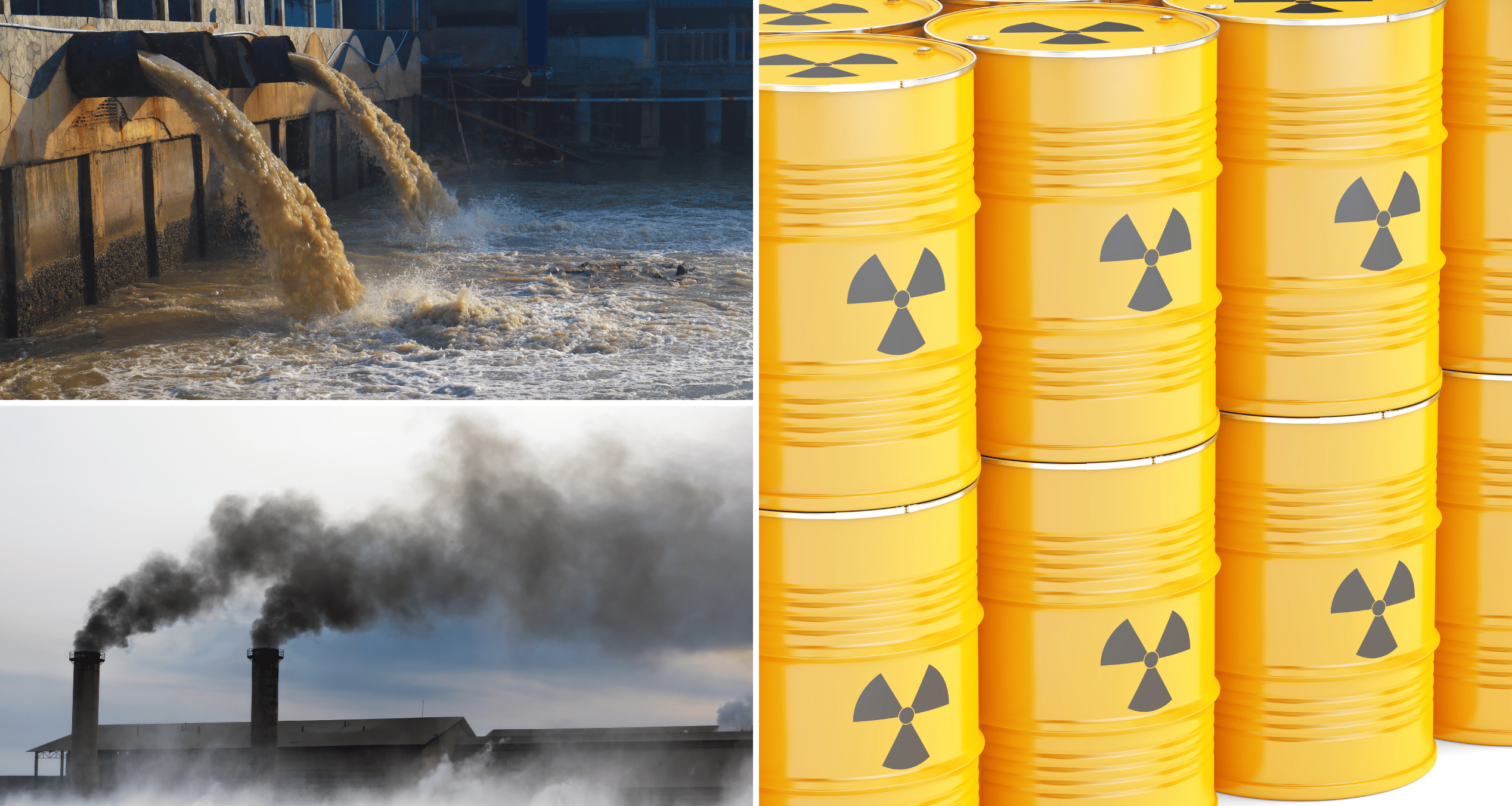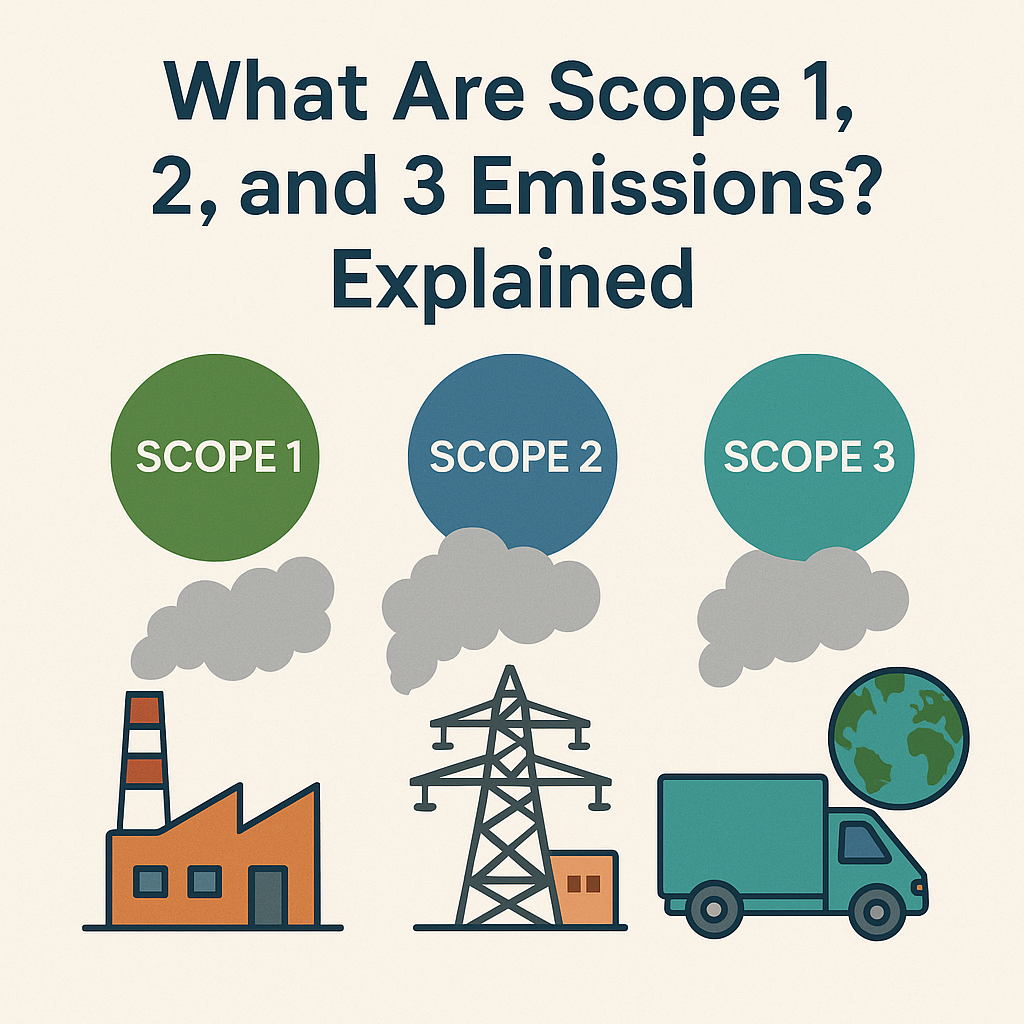Scope 3 Category 5 deals with the greenhouse gas emissions resulting from how a company manages waste produced within its operations during a given reporting year. This includes handling both solid waste and wastewater. It's important to highlight that Category 5 specifically looks at waste treatment facilities that are run by third-party organisations. Any waste management activities conducted within facilities owned or operated by the reporting company are covered under Scope 1 and Scope 2 emissions. Waste generated as part of these operations is considered an upstream Scope 3 category because companies usually outsource waste management services.
Category 5 also considers emissions that will occur in the future due to the waste generated in the current reporting year. Various waste management activities are part of this category, ranging from disposing of waste in landfills, using landfill gas to generate energy, recovering materials for recycling, incineration, composting, and converting waste into energy (like electricity generation) through waste-to-energy processes. Companies can also include emissions related to the transportation of waste using vehicles operated by third parties. These transport-related emissions are covered in Category 4, which focuses on upstream transportation and distribution.
Calculating Emissions from Waste Generated in Operations
Different categories of waste can lead to the production of varying quantities and types of greenhouse gases. The specific composition of the waste plays a pivotal role in determining which greenhouse gases are generated. These gases include Carbon Dioxide (CO2), primarily stemming from the degradation of both fossil fuels and biogenic materials found within the waste. Methane (CH4) is another significant contributor, particularly in the decomposition of biodegradable materials in landfill sites and waste-to-energy (WTE) processes. Additionally, Hydrofluorocarbons (HFCs) emerge as a result of disposing of refrigeration and air conditioning units, thereby adding to the pool of greenhouse gas emissions.
For companies looking to measure the emissions arising from waste management handled by third-party entities, several calculation methods are available. The first option is the Supplier-Specific Method, which involves the direct collection of emissions data from waste treatment companies. This is especially useful for activities like incineration or recycling, focusing on emissions categorised under both Scope 1 and Scope 2.
The second method is the Waste-Type-Specific Approach, which relies on specific emission factors tailored to the waste types and treatment methods used. It calculates emissions by taking into account the unique characteristics of each waste type and the corresponding waste management processes.
The third approach is the Average-Data Method, which estimates emissions by considering the overall volume of waste directed towards different disposal methods, such as landfills. This method employs average emission factors for each of these disposal techniques, providing a more generalised overview of emissions.
In the event that companies wish to also factor in emissions from the transportation of waste, they can use the calculation methodologies for category 4 (Upstream transportation and distribution).
Supplier-Specific Method
When waste treatment companies can furnish waste-specific emissions data directly, companies should collect allocated Scope 1 and Scope 2 emissions of the waste-treatment company. In this method, no additional emission factors are necessary.
The formula for calculating CO2e emissions from waste generated in operations is straightforward. It entails summing up the allocated Scope 1 and Scope 2 emissions of the waste treatment providers.
Put simply, it involves adding up the emissions produced by each waste treatment company involved in handling waste generated by your operations. These emissions fall under the categories of Scope 1 and Scope 2 emissions.
Waste-Type-Specific Method
This method accounts for the specific waste type and its treatment approach. Companies gather data on waste produced, its type, and the treatment method applied for each waste type. Emission factors are also collected for each waste type and its associated treatment method.
The formula for calculating CO2e emissions in this method involves aggregating the emissions from each type of waste produced. To calculate the emissions, the amount of waste produced is multiplied by the specific emission factor linked to that waste type and its treatment process.
Average-Data Method
The average-data method is utilised when the type of waste is unknown, making it preferable when waste treatment data is not readily accessible. Companies need to collect data on the total mass of waste generated in operations and the proportion of this waste subjected to different treatment methods.
The calculation formula for this method involves considering different waste treatment methods and computing the total emissions. For each waste treatment method, the total mass of waste generated is multiplied by the proportion of waste treated using that method, and then by the emission factor specific to that treatment method.
Accounting for Emissions from Recycling
Recycling plays a crucial role in the reduction of emissions, primarily by lessening the necessity to extract and process virgin materials, thereby diminishing the overall environmental impact. The emissions reductions associated with recycling are pertinent in three specific scenarios:
Circumstance A: When a company acquires a product or material that incorporates recycled content, the emissions from the recycling processes are factored into the cradle-to-gate emission calculation for that product. This falls under Category 1 (Purchased goods and services) in emissions reporting.
Circumstance B: Companies have the option to recycle a portion of their "operational waste." In such cases, the emissions related to this recycling activity are accounted for within Category 5 (Waste generated in operations).
Circumstance C: Products featuring recyclable components ultimately reach the end of their life cycle and become waste, which can be recycled. The emissions stemming from this end-of-life recycling process are categorised under Category 12 (End-of-life treatment of sold products).
To prevent the duplication of emissions in reporting, recommended methodologies like the "recycled content method" are advised. This method allocates emissions to the company using recycled materials. Processes that are not included in the cradle-to-gate emission calculation for the material when utilised as an input should be included in either Category 5 or Category 12. The recycled content method aligns with secondary emission factors designated for recycled material inputs, ensuring accurate and transparent emissions reporting.
Reporting Negative or Avoided Emissions from Recycling
Claims of negative or avoided emissions associated with recycling are assessed by comparing the emissions from processing the recycled material to those from producing the equivalent virgin material. Such claims should be reported separately from Scope 1, Scope 2, and Scope 3 emissions, supported by data.
Accounting for Emissions from Incineration with Energy Recovery (Waste-to-Energy)
Attributing emissions from waste-to-energy mirrors the approach taken for recycling. To prevent double counting, companies must account for upstream emissions from purchased energy generated from waste in Scope 2. Emissions from preparing and transporting waste to be combusted in a waste-to-energy facility are included in Category 5. However, emissions from the waste-to-energy combustion process itself are not accounted for.
Reporting Additional Information for Recycling and Waste-to-Energy
Emissions from recycling and waste-to-energy often yield similar results within the Scope 3 boundary, appearing close to zero. To provide a comprehensive view, it is advisable for companies to separately report additional information. Metrics such as emissions per unit of net electrical generation from waste-to-energy and recycling emissions relative to virgin material production emissions offer valuable insights for informed decisions regarding waste treatment options.
Accounting for Emissions from Wastewater
Emissions from wastewater can vary greatly depending on the level of treatment needed. Certain industries like starch refining, alcohol refining, pulp and paper, vegetables/fruits/juices, and food processing tend to have higher wastewater emissions if the wastewater is not treated onsite.
To calculate emissions from wastewater, companies in these industries can use the methods outlined in the 2006 IPCC Guidelines for National Greenhouse Gas Inventories Volume 5 Waste.



